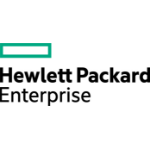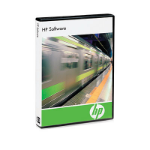We use cookies to make your experience better.
To comply with the new e-Privacy directive, you agree to the privacy policy and our use of cookies.
HPE IMC Basic WLAN Manager Network management
SKU
JG590AAE
£4,846.08
In stock
IMC Basic WLAN Manager Software Platform with 50 Access Points E-LTU
Category: Network Management Software
| Type | Network management |
|---|---|
| EAN | 5711045671920 |
| Manufacturer | HPE |
| Availability | Y |
HP Intelligent Management Center (IMC) Basic WLAN Manager Software Platform provides unified management of wired and wireless networks, adding wireless network management functions into existing wired network management systems. IMC Basic WLAN Manager software offers wireless LAN (WLAN) device configuration, topology, performance monitoring, RF heat mapping, and WLAN service reports.
It facilitates centralized control over your midsize or small wired and wireless network to reduce the time needed to deploy configuration changes, as well as helps provide uniformity throughout your wired and WLAN infrastructure. IMC Basic WLAN Manager software supports the management of HP and third-party devices, and is compatible with Microsoft® Windows® and Linux operating systems.
The software comes with a fixed-device limit of 50 nodes and includes a 50-node license of HP IMC Wireless Services Manager (WSM).
Management
HP Intelligent Management Software (IMC): cohesively integrates fault management, element configuration, and network monitoring from a central vantage point; built-in support for third-party devices enables network administrators to centrally manage all network elements with a variety of automated tasks, including discovery, categorization, baseline configurations, and software images; the software also provides configuration comparison tools, version tracking, change alerts, and more
Centralized deployment model: IMC Basic software delivers an extensive set of capabilities for managing small heterogeneous wired and wireless networks and is designed for simplicity and ease of use
Rich resource management: IMC software provides powerful network discovery and topology, including a detailed inventory of the network and highly accurate depictions of how it is configured; supported views include Layer 2 and 3, and the ability to create custom views like a dashboard homepage; customization enables administrators to organize and control the network infrastructure based on their preferred organizational model
Integrated sFlow traffic analysis: using the integrated sFlow traffic analysis, the system can collect flow information from sFlow-capable devices; through traffic analysis, IMC Basic software can help identify network bottlenecks, recognize anomalous traffic, and pinpoint varying levels of bandwidth traffic for different services and applications
Flexible, centralized reporting: simplifies an organization's report administration; flexible historical reports provide the information needed for network trend analysis and capacity planning, and offer predefined reports or customization options to define parameters; reports can be viewed in a number of formats, including .pdf and .xls, and can be sent automatically via email, or be scheduled to run at a set timeframe
It facilitates centralized control over your midsize or small wired and wireless network to reduce the time needed to deploy configuration changes, as well as helps provide uniformity throughout your wired and WLAN infrastructure. IMC Basic WLAN Manager software supports the management of HP and third-party devices, and is compatible with Microsoft® Windows® and Linux operating systems.
The software comes with a fixed-device limit of 50 nodes and includes a 50-node license of HP IMC Wireless Services Manager (WSM).
Management
HP Intelligent Management Software (IMC): cohesively integrates fault management, element configuration, and network monitoring from a central vantage point; built-in support for third-party devices enables network administrators to centrally manage all network elements with a variety of automated tasks, including discovery, categorization, baseline configurations, and software images; the software also provides configuration comparison tools, version tracking, change alerts, and more
Centralized deployment model: IMC Basic software delivers an extensive set of capabilities for managing small heterogeneous wired and wireless networks and is designed for simplicity and ease of use
Rich resource management: IMC software provides powerful network discovery and topology, including a detailed inventory of the network and highly accurate depictions of how it is configured; supported views include Layer 2 and 3, and the ability to create custom views like a dashboard homepage; customization enables administrators to organize and control the network infrastructure based on their preferred organizational model
Integrated sFlow traffic analysis: using the integrated sFlow traffic analysis, the system can collect flow information from sFlow-capable devices; through traffic analysis, IMC Basic software can help identify network bottlenecks, recognize anomalous traffic, and pinpoint varying levels of bandwidth traffic for different services and applications
Flexible, centralized reporting: simplifies an organization's report administration; flexible historical reports provide the information needed for network trend analysis and capacity planning, and offer predefined reports or customization options to define parameters; reports can be viewed in a number of formats, including .pdf and .xls, and can be sent automatically via email, or be scheduled to run at a set timeframe
| License | |
|---|---|
| Type | Network management |
| System requirements | |
| Recommended RAM | 8192 MB |
| Recommended processor | 3.0GHz Intel Xeon/Intel Core 2 Duo |
| Recommended storage drive space | 150 GB |
| Minimum system requirements | IE 9.0/10.0+ / Firefox 20+ / Chrome 26+ |
| Minimum RAM | 4096 MB |
| Minimum processor | 3GHz Intel Pentium 4 |
| Minimum storage drive space | 51200 MB |
| Compatible operating systems | Microsoft Windows Server 2008 32-bit/64-bit Standard/Enterprise Ed., Windows Server 2008 R2 64-bit Standard/Enterprise Ed., Windows Server 2008 SP2, Windows Server 2008 X64 SP2, Windows Server 2012 X64 Windows XP SP3 |
| Technical details | |
|---|---|
| Platform | PC |
| Management platform | IMC |
| Other features | |
| Platform | PC |
| Management platform | IMC |
You may also be interested in
| Product |

Recommended
HPE IMC Basic WLAN Manager Network man...
£4,846.08
|

Popular
HPE IMC Enterprise Software Platform N...
£6,169.92
|
 HPE IMC Service Health Manager Network...
HPE IMC Service Health Manager Network...
£5,285.76
|
 APC SFTWES75-DIGI networking software...
APC SFTWES75-DIGI networking software...
£4,084.36
|

New
APC SFTWES255Y-DIGI networking softwar...
£6,101.28
|
 APC SFTWES253Y-DIGI networking softwar...
APC SFTWES253Y-DIGI networking softwar...
£3,888.48
|
|---|---|---|---|---|---|---|
| SKU |
JG590AAE
|
JG748AAE
|
JG398AAE
|
SFTWES75-DIGI
|
SFTWES255Y-DIGI
|
SFTWES253Y-DIGI
|
| Description |
HP Intelligent Management Center (IMC) Basic WLAN Manager Software Platform provides unified management of wired and wireless networks, adding wireless network management functions into existing wired network management systems. IMC Basic WLAN Manager software offers wireless LAN (WLAN) device configuration, topology, performance monitoring, RF heat mapping, and WLAN service reports.
It facilitates centralized control over your midsize or small wired and wireless network to reduce the time needed to deploy configuration changes, as well as helps provide uniformity throughout your wired and WLAN infrastructure. IMC Basic WLAN Manager software supports the management of HP and third-party devices, and is compatible with Microsoft® Windows® and Linux operating systems. The software comes with a fixed-device limit of 50 nodes and includes a 50-node license of HP IMC Wireless Services Manager (WSM). Management HP Intelligent Management Software (IMC): cohesively integrates fault management, element configuration, and network monitoring from a central vantage point; built-in support for third-party devices enables network administrators to centrally manage all network elements with a variety of automated tasks, including discovery, categorization, baseline configurations, and software images; the software also provides configuration comparison tools, version tracking, change alerts, and more Centralized deployment model: IMC Basic software delivers an extensive set of capabilities for managing small heterogeneous wired and wireless networks and is designed for simplicity and ease of use Rich resource management: IMC software provides powerful network discovery and topology, including a detailed inventory of the network and highly accurate depictions of how it is configured; supported views include Layer 2 and 3, and the ability to create custom views like a dashboard homepage; customization enables administrators to organize and control the network infrastructure based on their preferred organizational model Integrated sFlow traffic analysis: using the integrated sFlow traffic analysis, the system can collect flow information from sFlow-capable devices; through traffic analysis, IMC Basic software can help identify network bottlenecks, recognize anomalous traffic, and pinpoint varying levels of bandwidth traffic for different services and applications Flexible, centralized reporting: simplifies an organization's report administration; flexible historical reports provide the information needed for network trend analysis and capacity planning, and offer predefined reports or customization options to define parameters; reports can be viewed in a number of formats, including .pdf and .xls, and can be sent automatically via email, or be scheduled to run at a set timeframe |
IMC Enterprise software is designed on a service-oriented architecture (SOA) using a business application flow model as its core and featuring an on-demand, modularized structure. This design enables the efficient implementation of end-to-end business management, while the software’s modularity allows for the effective integration of traditionally separate management tools.
Together, they provide complete management of resources, services, and users. Management Highly flexible and scalable deployment models: IMC Enterprise software delivers an extensive set of capabilities for managing large networks, and supplies a greater level of scalability and high availability through a flexible distributed deployment model than is the case with IMC Standard software deployments; IMC software can be deployed across multiple servers in a hierarchical architecture to provide increased scalability and resilience Intelligent management: - cohesively integrates fault management, element configuration, and network monitoring from a central vantage point. - with support for third-party devices, IMC software enables network administrators to centrally manage all network elements with a variety of automated tasks: discovery, categorization, baseline configurations and software images, and others. - IMC software provides configuration compare tools, version tracking, change alerts, and more. Modular architecture: optional modules can be added to enrich network management capabilities; modules for user access management, VPN management, and traffic analysis can be quickly added and provide instant benefits; the architecture allows modules to share information and provide collaborative policy creation and reports eAPI library to integrate third-party applications: The IMC eAPI library utilizes a RESTful implementation for simplified integration with HP and third-party applications. Over 200 eAPI calls are available in the library, which is included with IMC Enterprise software Live update enhancements: IMC Enterprise software now provides notification and download availability of the latest IMC patches as well as new firmware version releases for HP devices |
HP Intelligent Management Center (IMC) is a modular, comprehensive resource management platform. With its extensive device support, IMC provides true end-to-end management for the entire network, as well as the entire operation cycle.
IMC Service Health Manager (SHM) is an IMC module that provides end-to-end service monitoring and service assurance through the visualization of infrastructure or network variance/factors that are in the service path. SHM leverages data derived from other IMC components to yield critical performance metrics. SHM then aggregates key performance indicators (KPIs) to generate key quality indicator (KQI) metrics. KQIs can be modeled to provide a visual representation of service-level agreement (SLA) obligations. With SHM, administrators can visually determine the level of quality for defined services and take proactive measures to maintain SLAs. Management Predefined KPIs and custom KPIs: Comprehensive KPI collecting: predefines five KPIs (device monitoring, interface monitoring, NQA voice, NQA link, and NTA traffic) by extracting the KPI indexes from all IMC modules (including platform traps, performance, NQA, and NTA) to realize metered definitions of network performance. Predefine abundant KQIs: allows you to predefine different KQIs, including device status, interface performance, NQA voice and link quality, and NTA host traffic. Visual service modeling: provides visual SLA modeling tools; allows you to define the service-related resources, set up a KQI/compound KQI, and then create evaluation policies to obtain a holistic view of the service Complete network quality assurance (NQA) link monitoring: Comprehensive service quality monitoring: monitors delay; jitter; packet loss; and throughput of different services, including voice, video, network connectivity, and VRF. - Multivendor device management . - Support for NQA grouping based on service types. Real-time monitoring, audit, and alarm of NQA instances: - Instant management is the core function of NQA and allows you to configure test period, alarm mode, service level, service class, and device parameter through instant management. - The real-time audit function helps solve problems when the configured instance cannot collect data normally. - The threshold values for alarms. Comprehensive SHM reports: includes daily, weekly, monthly, and annual service health monitoring reports |
A cloud-based, vendor agnostic, secure solution that enables wherever-you-go monitoring and visibility into your IT physical infrastructure
Extendable architecture Available node and application license keys extend the capabilities of the platform allowing it to grow to meet changing business needs. Remote monitoring support Web-based service that serves as a second set of eyes into the health of a company's physical infrastructure. Experienced professionals work non-stop to provide 24-hour monitoring and to help diagnose problems before they become critical. Encrypted communications 2048 bit RSA certificate and data is encrypted in transit using 256 bit AES encryption. EcoStruxure IT Gateway uses an outbound connection through Port 443, and only communicates to EcoStruxure IT cloud using 40.84.62.190 and 23.99.90.28. Event Notifications Receive real-time event notifications that minimize response times to critical physical infrastructure situations, reduce mean time to repair, improve efficiency, and maximize uptime. Unified console Customizable Windows and Linux client application enables instant access from any browser or mobile device Alarm Consolidation Reduces erroneous alarms and decreases MTTR by detecting the root cause in minutes. Cloud-based monitoring Maintain uptime for local edge and distributed environments and check the status of your physical infrastructure equipment from a centralized view, ensuring peace of mind whether onsite or remote. Centralized Inventory Management Obtain Immediate and detailed visibility of all physical infrastructure devices by geography or customizable location. Multi-vendor device support Extensive multi-vendor support for monitoring networked SNMP, MODBUS and Redfish devices. Enables visibility of devices through threshold alert notifications, data trending and reporting. Assessment Determine patterns of healthy behavior and provide a scorecard using analytics and machine learning to identify which devices require attention. Benchmarking Compare your devices performance against the total population of similar devices in the industry. Auto-discovery Reduces the time needed to install and deploy physical infrastructure devices by automatically detecting manageable devices on your network. Automatic updates and backups Updates and backups are automatically applied to always provide the most current solution. Private networking Reduce IP addresses needed on the public network to manage devices, by placing them on an isolated secure network. Graphical trending analysis Access current and historic data for any device or group of devices. Plot and graph multiple data points in a logical correlation to visualize potential hazardous trends. Custom reporting Create, save and schedule user-defined reports for ease of data collection, distribution and analysis. Centralized Alert Repository Access historical alerts from several appliances through one central database. Sort alerts by type, date, appliance, and/or device group. |
A cloud-based, vendor agnostic, secure solution that enables wherever-you-go monitoring and visibility into your IT physical infrastructure
Extendable architecture Available node and application license keys extend the capabilities of the platform allowing it to grow to meet changing business needs. Remote monitoring support Web-based service that serves as a second set of eyes into the health of a company's physical infrastructure. Experienced professionals work non-stop to provide 24-hour monitoring and to help diagnose problems before they become critical. Encrypted communications 2048 bit RSA certificate and data is encrypted in transit using 256 bit AES encryption. EcoStruxure IT Gateway uses an outbound connection through Port 443, and only communicates to EcoStruxure IT cloud using 40.84.62.190 and 23.99.90.28. Event Notifications Receive real-time event notifications that minimize response times to critical physical infrastructure situations, reduce mean time to repair, improve efficiency, and maximize uptime. Unified console Customizable Windows and Linux client application enables instant access from any browser or mobile device Alarm Consolidation Reduces erroneous alarms and decreases MTTR by detecting the root cause in minutes. Cloud-based monitoring Maintain uptime for local edge and distributed environments and check the status of your physical infrastructure equipment from a centralized view, ensuring peace of mind whether onsite or remote. Centralized Inventory Management Obtain Immediate and detailed visibility of all physical infrastructure devices by geography or customizable location. Multi-vendor device support Extensive multi-vendor support for monitoring networked SNMP, MODBUS and Redfish devices. Enables visibility of devices through threshold alert notifications, data trending and reporting. Assessment Determine patterns of healthy behavior and provide a scorecard using analytics and machine learning to identify which devices require attention. Benchmarking Compare your devices performance against the total population of similar devices in the industry. Auto-discovery Reduces the time needed to install and deploy physical infrastructure devices by automatically detecting manageable devices on your network. Automatic updates and backups Updates and backups are automatically applied to always provide the most current solution. Private networking Reduce IP addresses needed on the public network to manage devices, by placing them on an isolated secure network. Graphical trending analysis Access current and historic data for any device or group of devices. Plot and graph multiple data points in a logical correlation to visualize potential hazardous trends. Custom reporting Create, save and schedule user-defined reports for ease of data collection, distribution and analysis. Centralized Alert Repository Access historical alerts from several appliances through one central database. Sort alerts by type, date, appliance, and/or device group. |
A cloud-based, vendor agnostic, secure solution that enables wherever-you-go monitoring and visibility into your IT physical infrastructure
Extendable architecture Available node and application license keys extend the capabilities of the platform allowing it to grow to meet changing business needs. Remote monitoring support Web-based service that serves as a second set of eyes into the health of a company's physical infrastructure. Experienced professionals work non-stop to provide 24-hour monitoring and to help diagnose problems before they become critical. Encrypted communications 2048 bit RSA certificate and data is encrypted in transit using 256 bit AES encryption. EcoStruxure IT Gateway uses an outbound connection through Port 443, and only communicates to EcoStruxure IT cloud using 40.84.62.190 and 23.99.90.28. Event Notifications Receive real-time event notifications that minimize response times to critical physical infrastructure situations, reduce mean time to repair, improve efficiency, and maximize uptime. Unified console Customizable Windows and Linux client application enables instant access from any browser or mobile device Alarm Consolidation Reduces erroneous alarms and decreases MTTR by detecting the root cause in minutes. Cloud-based monitoring Maintain uptime for local edge and distributed environments and check the status of your physical infrastructure equipment from a centralized view, ensuring peace of mind whether onsite or remote. Centralized Inventory Management Obtain Immediate and detailed visibility of all physical infrastructure devices by geography or customizable location. Multi-vendor device support Extensive multi-vendor support for monitoring networked SNMP, MODBUS and Redfish devices. Enables visibility of devices through threshold alert notifications, data trending and reporting. Assessment Determine patterns of healthy behavior and provide a scorecard using analytics and machine learning to identify which devices require attention. Benchmarking Compare your devices performance against the total population of similar devices in the industry. Auto-discovery Reduces the time needed to install and deploy physical infrastructure devices by automatically detecting manageable devices on your network. Automatic updates and backups Updates and backups are automatically applied to always provide the most current solution. Private networking Reduce IP addresses needed on the public network to manage devices, by placing them on an isolated secure network. Graphical trending analysis Access current and historic data for any device or group of devices. Plot and graph multiple data points in a logical correlation to visualize potential hazardous trends. Custom reporting Create, save and schedule user-defined reports for ease of data collection, distribution and analysis. Centralized Alert Repository Access historical alerts from several appliances through one central database. Sort alerts by type, date, appliance, and/or device group. |
| Short Description |
IMC Basic WLAN Manager Software Platform with 50 Access Points E-LTU
|
HP IMC Enterprise Software Platform with 50-node E-LTU
|
HP IMC Service Health Manager Software Module E-LTU
|
Ecostruxure IT Expert Access for 75 nodes
|
EcoStruxure IT Expert 25 nodes 5 Years
|
EcoStruxure IT Expert 25 nodes 3 Years
|
| Manufacturer |
HPE
|
HPE
|
HPE
|
APC
|
APC
|
APC
|

